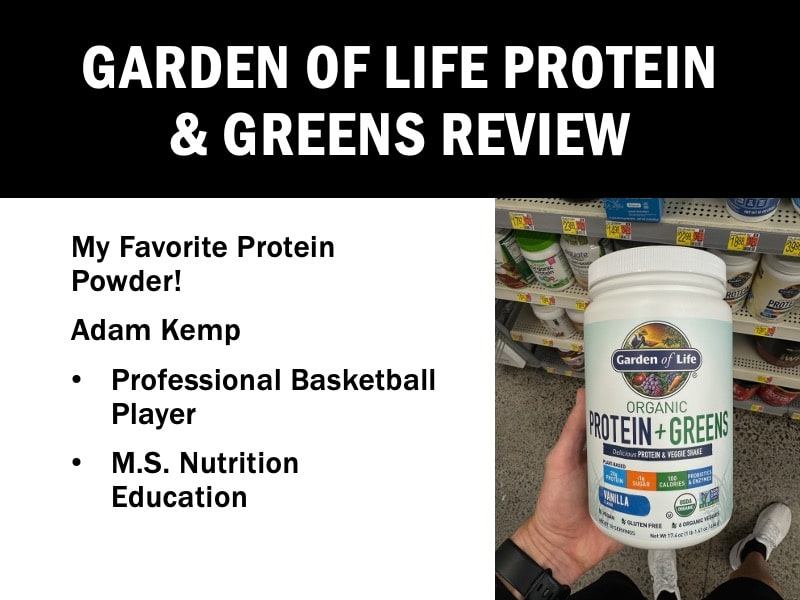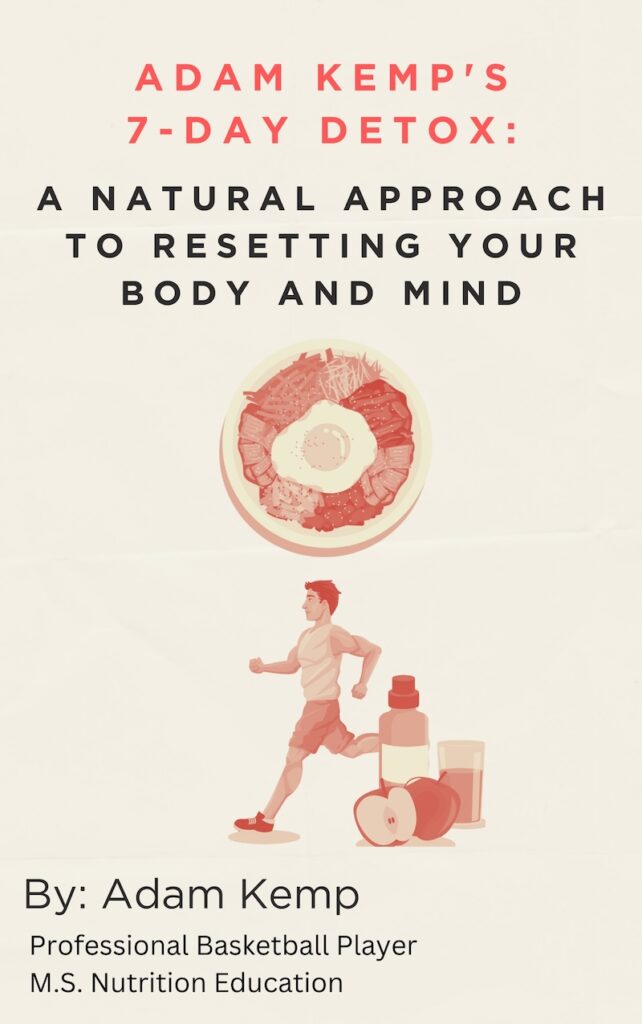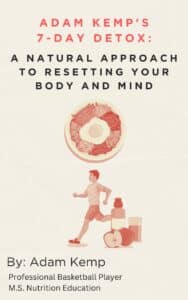Garden of Life Protein and Greens Review: How Good is It?
As a professional basketball player and nutrition educator, I regularly choose Garden of Life Protein and Greens as my protein powder of choice due to its clean, sustainable ingredients and comprehensive nutritional value.
Choosing the right protein powder can feel overwhelming with so many options on the market, and finding one that aligns with your health and fitness goals can be tricky since not all are created equal.
While protein powders offer a quick, convenient source of protein, I believe that selecting one that provides additional health benefits is crucial for maximizing long-term results.
In my opinion, that’s where Garden of Life Protein and Greens separates itself.
After discovering it at Walmart for an excellent price, Garden of Life Protein and Greens has become my top choice due to its ability to support muscle recovery, improve gut health, and provide lasting energy without the unnecessary fillers or artificial additives often found in other products.
One key detail to note is that Garden of Life Protein and Greens is different from Garden of Life Raw Organic Protein and Greens.
While both products are similar in ingredients and nutrient composition, they are not identical.
Garden of Life Protein and Greens is available at major retailers like Target and Walmart, whereas Garden of Life Raw Organic Protein and Greens is primarily sold online through Amazon and specialty stores.
The main differences lie in slight variations in macronutrient content, but Garden of Life Protein and Greens is the better value—offering the same core benefits at a significantly lower price.
If you’re looking for an excellent plant-based protein powder that delivers high-quality ingredients at a reasonable cost, I recommend Garden of Life Protein and Greens!
Last update on 2025-04-16 / This article includes affiliate links/Images via Amazon Product Advertising API. I may earn commissions on purchases made through these links.
Ingredients – What is in Garden of Life Organic Protein and Greens?
Both Garden of Life Protein and Greens and Garden of Life Raw Organic Protein and Greens are plant-based protein supplements that combine organic proteins with nutrient-dense greens. While their ingredient profiles are similar, there are notable differences between the two.
The Raw Organic version incorporates additional sprouted grains and seeds, such as amaranth, buckwheat, and flaxseed.
Sprouting grains can enhance nutrient bioavailability, increasing levels of folate, iron, vitamin C, zinc, magnesium, and protein.
Sprouting also reduces antinutrients like phytic acid, potentially improving mineral absorption.
While these nutritional enhancements are beneficial, they may not be substantial enough to justify the higher cost of the Raw Organic Protein and Greens version for regular use.
The standard Protein and Greens provides a comprehensive nutrient profile at a more accessible price point, making it a practical choice for those seeking quality plant-based protein supplementation without incurring additional expense.
Overall, the ingredients in Garden of Life Protein and Greens provide a well-rounded nutritional profile that not only aids muscle recovery but also contributes to digestive health, immunity, and energy levels.
Its blend of plant-based proteins and greens not only supports my physical performance but also aligns with my long-term health goals—especially as I manage my fitness and nutrition at an elite level.
Both products are plant-based protein powders with added greens, but they have differences in protein sources, greens, probiotics, and additional nutrients.
Key Differences
- Protein Composition: Raw Organic Protein and Greens includes additional sprouted grains (amaranth, buckwheat, and flaxseed), whereas Protein and Greens uses a simpler blend with more brown rice and pea protein.
- Probiotic & Digestive Enzyme Content: Raw Organic Protein and Greens has double the probiotics (3 billion CFUs vs. 1.5 billion CFUs) and a more complex enzyme blend.
- Fiber Content: The Walmart/Target version (Protein and Greens) has slightly more fiber per serving.
- Greens Blend: Both versions include alfalfa, spinach, kale, and broccoli, but the Protein and Greens version also has carrots and beets.
- Certified RAW Ingredients: Raw Organic Protein and Greens is labeled as RAW, meaning its ingredients are processed at low temperatures to preserve nutrient content.
Garden of Life Protein and Greens (Walmart/Target version)
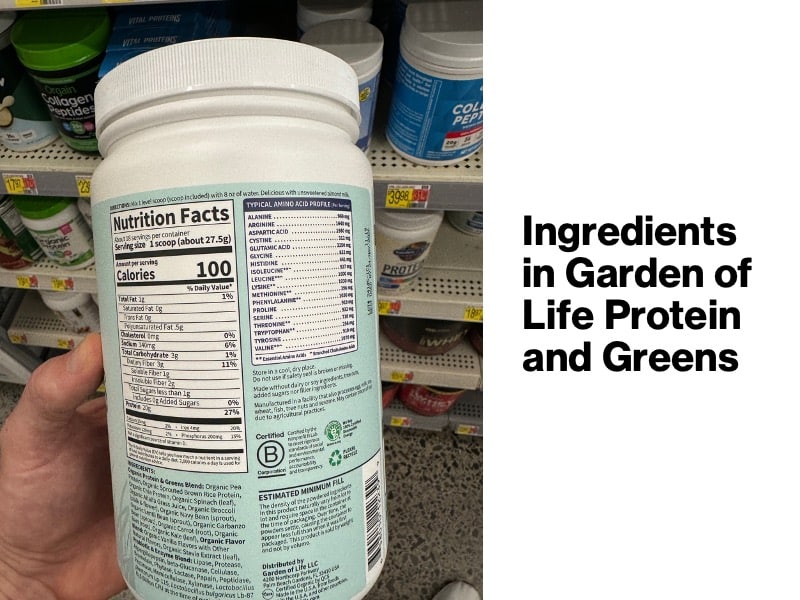
Here’s a closer look at its key ingredients in Garden of Life Protein and Greens:
- Protein Sources: 20 grams of organic plant-based protein per serving, including sprouted brown rice, peas, chia, navy beans, lentil beans, and garbanzo beans. This provides a clean, easily digestible protein to support muscle growth and recovery.
- Greens and Vegetables: A mix of six organic greens, including alfalfa grass juice, spinach, kale, broccoli, carrots, and beets. These greens offer essential vitamins, minerals, and antioxidants to boost immune function and overall health.
- Probiotics and Enzymes: Each serving includes 1.5 billion CFUs of probiotics, along with a blend of non-GMO digestive enzymes to support gut health and digestion.
- Fiber Content: With 3 grams of organic fiber per serving, this supplement promotes a healthy digestive system, supports satiety, and stabilizes blood sugar levels.
- Calories: Depending on the flavor, the powder contains 100-120 calories per serving, making it a low-calorie option for those looking to maintain or lose weight.
- Additional Features: USDA Organic, Non-GMO, no artificial additives
Garden of Life Raw Organic Protein and Greens (Amazon/Online version)
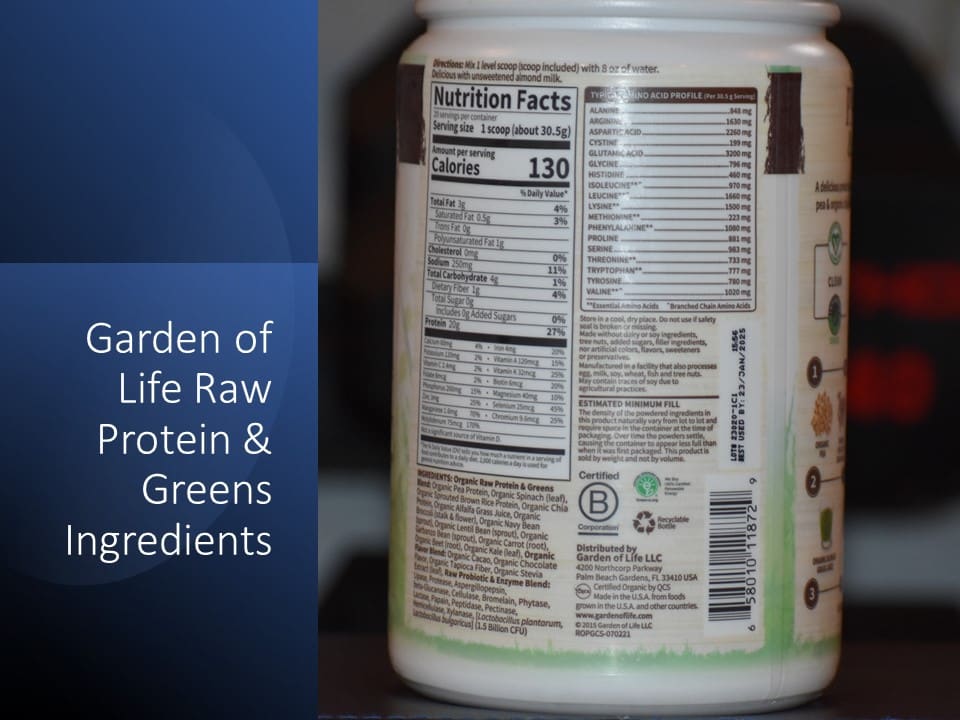
- Protein Sources: Organic pea protein, organic sprouted brown rice protein, organic amaranth sprout, organic buckwheat sprout, organic garbanzo beans, organic lentil beans, organic navy beans, organic chia seeds, organic flaxseed
- Greens Blend: Organic alfalfa grass juice, organic spinach, organic kale, organic broccoli
- Probiotics & Enzymes: 3 billion CFUs of Lactobacillus plantarum + a more extensive digestive enzyme blend
- Fiber Content: 2g per serving
- Calories: 110-120 per serving
- Additional Features: USDA Organic, Non-GMO, Certified RAW, sprouted ingredients
Which One Should You Buy?
- For the Best Value: Garden of Life Protein and Greens (Walmart/Target version) is cheaper and provides almost the same benefits at a lower price.
- For Sproute Ingredients & More Probiotics: Garden of Life Raw Organic Protein and Greens offers a more diverse protein source with sprouted grains and higher probiotic content but is more expensive.
Last update on 2025-04-16 / This article includes affiliate links/Images via Amazon Product Advertising API. I may earn commissions on purchases made through these links.
My Rating: 4.9/5
I give Garden of Life Protein and Greens a rating of 4.9/5, largely due to its exceptional combination of organic plant-based proteins, nutrient-rich greens, and probiotics for gut health.
This blend offers a complete nutritional profile that supports muscle recovery, boosts energy levels, and improves digestion, making it an ideal choice for athletes and health-conscious individuals alike.
The product stands out for its clean, non-GMO, and organic ingredients, ensuring you’re fueling your body with high-quality, sustainable nutrition. It’s also free from artificial additives, fillers, and sweeteners, which is a significant advantage over many other protein powders on the market.
The flavors—chocolate and vanilla—provide a pleasant, balanced sweetness that doesn’t overwhelm, and the unflavored option offers flexibility for mixing into a variety of recipes or smoothies.
Additionally, it mixes smoothly with liquids, especially when blended with fruits or vegetables, creating a rich, creamy shake without the gritty texture common in other protein powders.
The inclusion of digestive enzymes and probiotics enhances nutrient absorption, ensuring you get the most out of each serving.
Pros
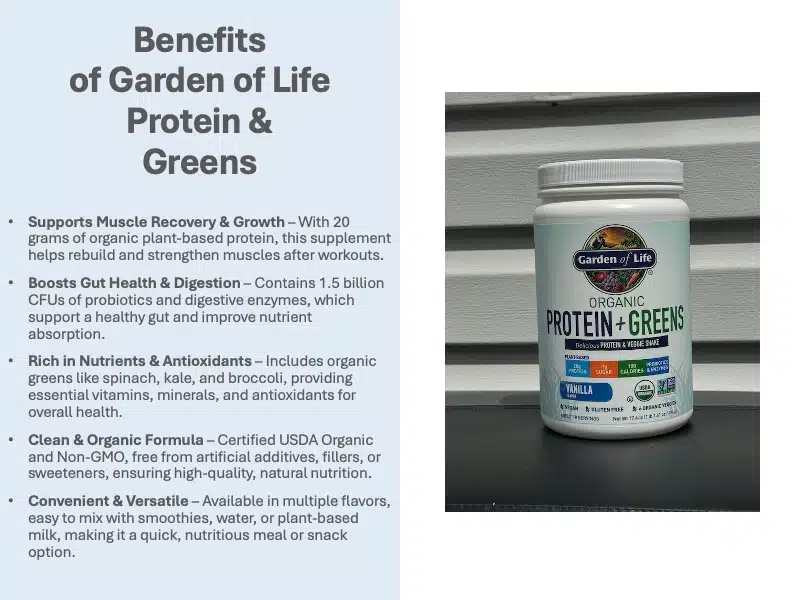
Garden of Life Organic Protein and Greens offers a range of benefits that make it an excellent choice for anyone looking to support their health and fitness. Here are the top advantages:
- Plant-Based Protein: Delivers 20 grams of high-quality, easily digestible protein, perfect for muscle growth and recovery after workouts.
- Rich in Micronutrients: Packed with organic greens like spinach, kale, and broccoli, it provides essential vitamins and minerals that support immune function and overall well-being.
- Digestive Health Support: The combination of probiotics, prebiotics, and digestive enzymes promotes a healthy gut, supports digestion, and enhances nutrient absorption.
- Clean and Organic: Certified USDA Organic and Non-GMO, ensuring you’re getting a high-quality, clean product without harmful additives or contaminants.
- Versatile and Easy to Use: Available in multiple flavors and mixes easily with water, almond milk, or smoothies, making it a convenient option for a quick meal or snack.
Cons
Despite its many benefits, Garden of Life Organic Protein & Greens does have a few downsides to consider:
- Potential Digestive Upset: Some users may experience bloating or gas, particularly those not accustomed to fiber-rich supplements or probiotics.
- Price: Due to its organic, non-GMO ingredients and overall quality, this product is more expensive than other protein powders on the market. However, it is one of the best protein powders to buy at Walmart because they sell it for a much better price.
- Nutrient Absorption: While fiber is beneficial for digestion, its high content may slow down nutrient absorption for muscle recovery in some cases.
Last update on 2025-04-16 / This article includes affiliate links/Images via Amazon Product Advertising API. I may earn commissions on purchases made through these links.
How Often Should You Drink Garden of Life Protein and Greens?
Incorporating Garden of Life Protein and Greens into your daily routine is easy and flexible, whether you’re looking to support muscle recovery after a workout or boost your overall protein intake throughout the day.
For optimal results, it’s important to understand your body’s protein needs and how this supplement fits in.
For most active individuals, the recommended daily protein intake is between 10% and 35% of your daily calorie needs.
If you are looking to build muscle as fast as possible, it is generally optimal to consume 1.6 to 2.2 grams of protein per kilogram of body weight (or 0.73 to 1 gram per pound).
For example, if you weigh 150 pounds (68 kg), your daily protein target would range from about 110 to 150 grams of protein.
Achieving this can be challenging through food alone, which is where protein supplements like Garden of Life Protein and Greens become valuable.
Protein powder is a quick and convenient way to help meet these protein needs, especially when you have a busy schedule or after an intense workout. Garden of Life Protein and Greens offers not only protein but also extra nutrients, like greens and probiotics, making it more than just a protein supplement—it’s a nutrient-dense option for overall health.
I often use Garden of Life Protein and Greens after workouts for muscle recovery, or in a breakfast smoothie to kick-start my day.
The convenience of a protein powder like this means you can take it whenever you need an extra protein boost—whether post-workout, as a snack replacement, or simply to round out your meals.
Your body can typically digest and utilize around 25-30 grams of protein at a time, so spacing your protein intake throughout the day is beneficial.
One scoop of Garden of Life Protein and Greens provides 20 grams of protein, making it an ideal serving size to fit into your day.
You can easily add it to smoothies and shakes or mix it with water or your favorite milk alternative for a quick, nutrient-packed meal.
Final Thoughts: Is Garden of Life Organic Protein and Greens a Good Protein Powder to Buy?
After using Garden of Life Protein and Greens consistently, I believe it’s one of the best protein powder supplements available, especially for its price.
The combination of organic plant-based protein, nutrient-dense greens, probiotics, and digestive enzymes makes it a well-rounded option for anyone looking to support their fitness goals while also prioritizing gut health and overall well-being.
For me, the biggest selling point is that it provides everything you want in a vegan protein powder without unnecessary fillers or artificial additives. I’ve found it easy to digest, and it doesn’t leave me feeling bloated like some other plant-based protein powders.
The blend of organic spinach, kale, alfalfa, and broccoli offers additional vitamins and minerals, making it more than just a protein supplement—it’s a daily nutrient boost.
While I recognize that Garden of Life Raw Organic Protein and Greens has some added benefits, such as sprouted grains and slightly higher probiotic content, the difference isn’t significant enough for me to justify regularly paying a much higher price for it.
Garden of Life Protein and Greens, which you can find at retailers like Walmart and Target, delivers nearly the same benefits at a much more affordable price point.
Whether you need a post-workout recovery shake, an easy way to increase your daily protein intake, or a convenient meal replacement, this protein powder is a great choice. I personally enjoy using it in smoothies, and it mixes well with almond milk or water.
If you’re looking for a high-quality, budget-friendly, and nutrient-packed vegan protein powder, this is definitely one I recommend.
Last update on 2025-04-16 / This article includes affiliate links/Images via Amazon Product Advertising API. I may earn commissions on purchases made through these links.
Read Next: Whey vs. Plant Protein

